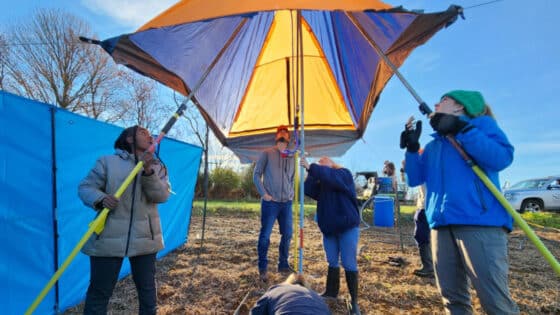Bowen, J.C., L.A. Kaplan, and R.M. Cory. 2019. Limnology and Oceanography 65(1): 13–26.
https://doi.org/10.1002/lno.11244
Abstract
Exposure of dissolved organic matter (DOM) to sunlight can increase or decrease the fraction that is biodegradable (BDOM), but conceptual models fail to explain this dichotomy. We investigated the effect of sunlight exposure on BDOM, addressing three knowledge gaps: (1) how fractions of DOM overlap in their susceptibility to degradation by sunlight and microbes, (2) how the net effect of sunlight on BDOM changes with photon dose, and (3) how rates of DOM photodegradation and biodegradation compare in a stream. Stream waters were exposed to sunlight, and then fed through bioreactors designed to separate labile and semi‐labile pools within BDOM. The net effects of photodegradation on DOM biodegradability, while generally positive, represented the balance between photochemical production and removal of BDOM that was mediated by photon dose. By using sunlight exposure times representative of sunlight exposures in a headwater stream and bioreactors colonized with natural communities and scaled to whole‐stream dynamics, we were able to relate our laboratory findings to the stream. The impact of sunlight exposure on rates of DOM biodegradation in streams was calculated using rates of light absorption by chromophoric DOM, apparent quantum yields for photomineralization and photochemical alteration of BDOM, and mass transfer coefficients for labile and semi‐labile DOM. Rates of photochemical alteration of labile DOM were an order of magnitude lower than rates of biodegradation of labile DOM, but for semi‐labile DOM, these rates were similar, suggesting that sunlight plays a substantial role in the fate of semi‐labile DOM in streams.


